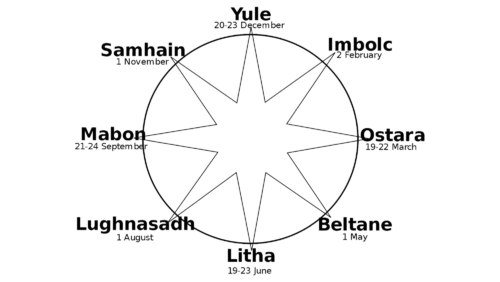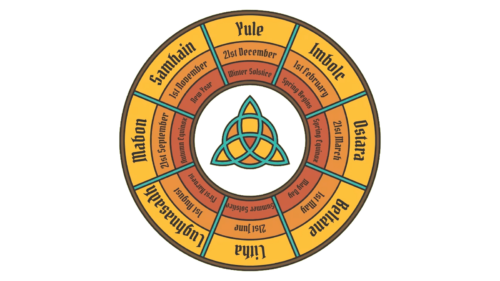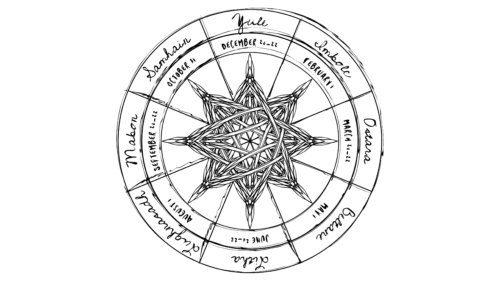Celtic symbols, emblematic of an ancient and mystical culture, have always captivated the imagination with their enigmatic designs and profound meanings. These symbols, emerging from various Celtic traditions across Europe, are not mere artistic creations but rather encapsulations of the Celts’ deep-seated beliefs, values, and worldview. Among these symbols, while the Triskele and the Celtic Cross are notably significant, others like the Claddagh ring, symbolizing love, loyalty, and friendship, and the Dara Knot, representing strength and wisdom, are equally fascinating. However, our focus will be on a different symbol that holds a unique place in Celtic symbolism.
This particular Celtic symbol, distinct in its representation and meaning, weaves a story that goes beyond its visual appeal. Often seen in Celtic art and ancient relics, it embodies the essence of Celtic spirituality and its intimate connection with the natural world. This symbol, with its intricate patterns, signifies the perpetual cycle of life, death, and rebirth, a concept central to the Celtic understanding of the universe.
Historically, this symbol wasn’t just an artistic element but played a vital role in Celtic ceremonies and daily practices. Its presence across various mediums – from the illuminated pages of ancient manuscripts to the rugged stone carvings and delicate metalwork – highlights its significant role in Celtic culture.
The importance of Celtic symbols extends far beyond their aesthetic appeal. They serve as a gateway to understanding the Celtic mindset, offering a glimpse into how the ancient Celts interacted with their environment and interpreted their experiences. These symbols were dynamic, evolving over time to incorporate new meanings, yet they remained deeply anchored in the Celtic spiritual and cultural identity.
The connection of this symbol with Gaelic festivals is particularly noteworthy. These festivals, integral to the Celtic calendar, celebrated the natural rhythms and cycles of the earth. They were times of community gathering, reflection, and reverence for nature, themes that are deeply woven into the fabric of Celtic symbolism. To understand the multifaceted nature of this Celtic symbol, consider the following list:
- A representation of life’s cyclical nature and the intertwining of the physical and spiritual realms.
- Integral to Celtic rituals and daily life, reflecting the Celts’ spiritual beliefs.
- Its evolution in meaning, mirroring the changing dynamics of Celtic cultures.
- Its association with Gaelic festivals, highlighting its cultural and spiritual significance.
A fascinating aspect of this symbol is its enduring popularity. In contemporary times, it has seen a resurgence, particularly in the world of modern art and fashion. This resurgence is not just a nod to aesthetic preferences but signifies a deeper longing to reconnect with ancient wisdom and heritage. As a modern Celtic scholar puts it, “In these symbols, we find the whispers of our ancestors, echoing through the ages, reminding us of a world interconnected and profound.”
Expanding on the relevance of Celtic symbols’ meanings in the modern context, it is clear they offer more than historical curiosity. They provide a window into the Celtic soul, revealing how this ancient person viewed their world, their spiritual beliefs, and their place within the natural order. This specific Celtic symbol, with its rich symbolism and enduring presence, stands as a powerful testament to the lasting impact of Celtic culture and its continuing relevance in contemporary society.
These symbols, particularly the one in focus, are not just remnants of a distant past but are living pieces of art and spirituality, continually evolving and gaining new meanings in our modern world. They remind us of the timeless nature of certain truths and the enduring legacy of the Celtic spirit.
Gaelic Festivals Tattoo
Celtic Gaelic festivals have always been a cornerstone of Celtic culture, embodying the rhythms of nature, the passage of time, and the spiritual beliefs of the Celts. These festivals, marked by significant ceremonies and rituals, were deeply intertwined with the natural world. They celebrated the changing seasons, agricultural milestones, and cosmic events, playing a crucial role in the Celtic community. Their importance is so profound that they have transcended time to inspire modern expressions, particularly in the form of tattoos.
Tattoos, in the Celtic tradition, are more than just body art; they are a form of storytelling and a means of connecting with one’s heritage. Celtic Gaelic festival-themed tattoos are a popular choice among those who wish to celebrate and honor these ancient traditions. These tattoos often feature symbols and motifs associated with the festivals. For example, a tattoo might depict the Beltane fire, symbolizing the festival of fertility and growth, or the intricate patterns of the Samhain, representing the Celtic New Year and the thinning of the veil between the living and the dead.
The popularity of these tattoos lies not just in their aesthetic appeal but also in their ability to convey deep meanings. They serve as a personal reminder of the cycles of life, the importance of nature, and the rich heritage of the Celtic culture. People who choose these tattoos often do so to express a connection with their ancestral roots, or to pay homage to the ancient wisdom that these festivals represent.
Additionally, these tattoos often incorporate other **Celtic symbols** to enhance their meaning. For instance, intertwining the tattoo design with a Celtic knot can signify the never-ending cycle of life and the interconnectedness of all things, themes that are central to Gaelic festivals. The choice of colors, too, plays a significant role, with greens and browns often used to represent the earth and nature, central elements in these festivals.
In summary, Celtic Gaelic festival tattoos are a beautiful and meaningful way to honor ancient Celtic traditions. They are not only a form of personal expression but also a testament to the enduring legacy of the Celtic culture and its festivals. These tattoos keep the spirit of the Gaelic festivals alive, allowing individuals to carry a piece of Celtic history and spirituality with them.









